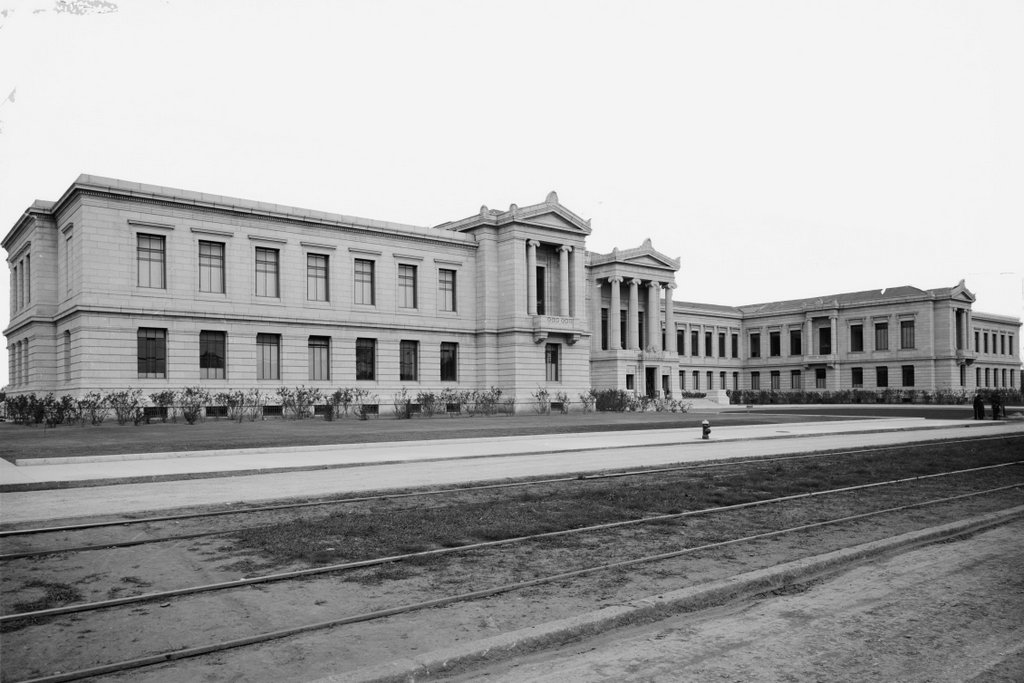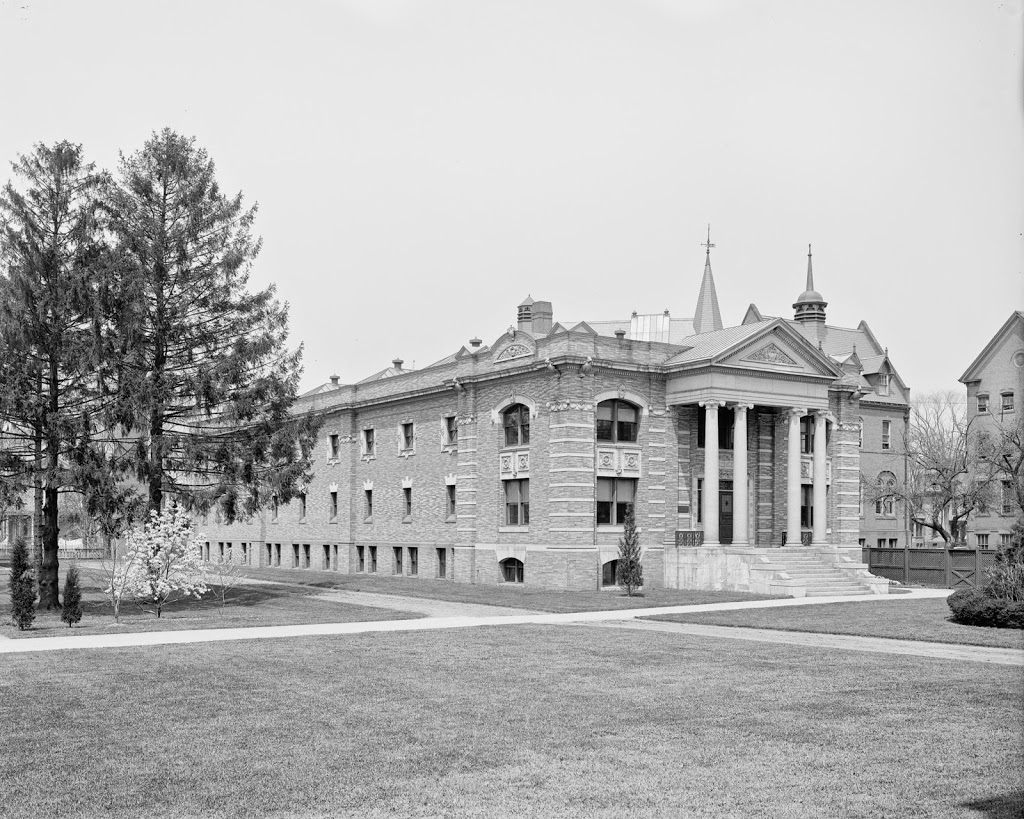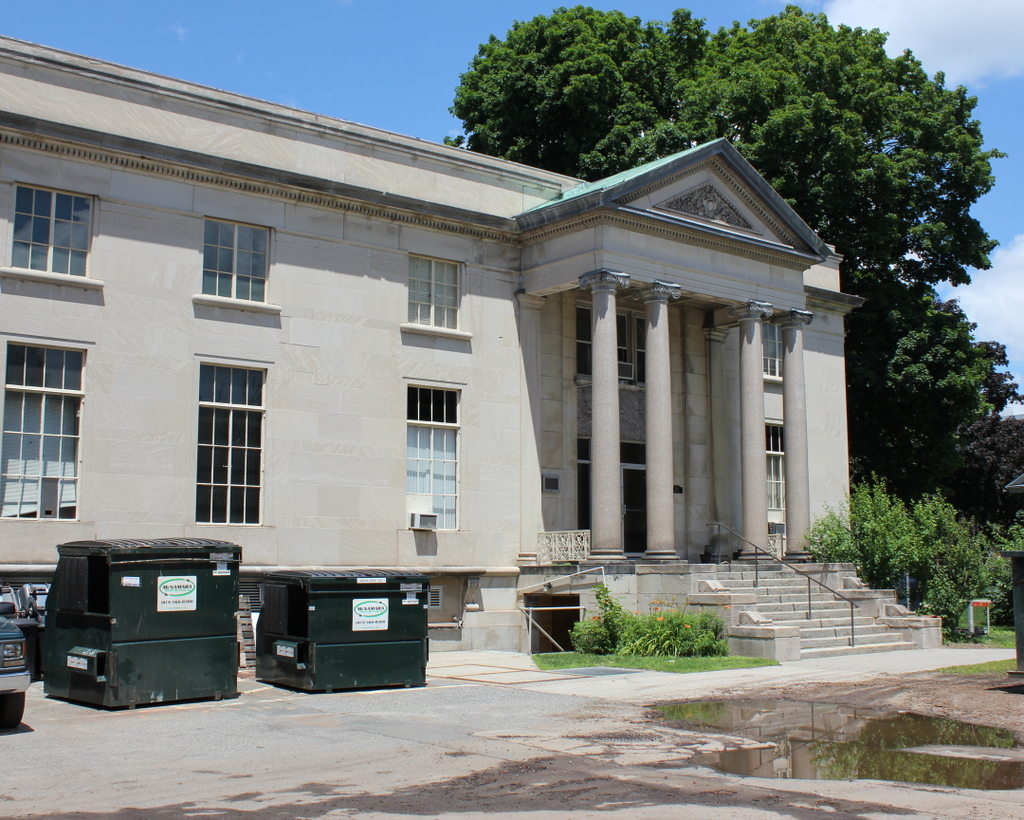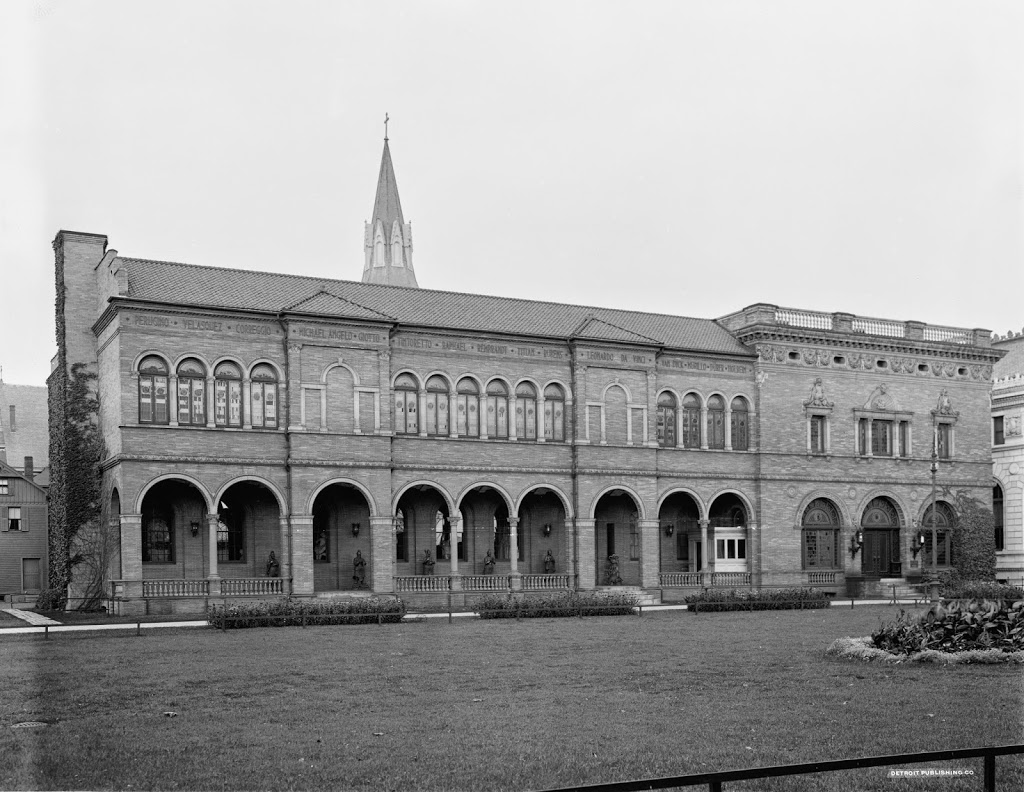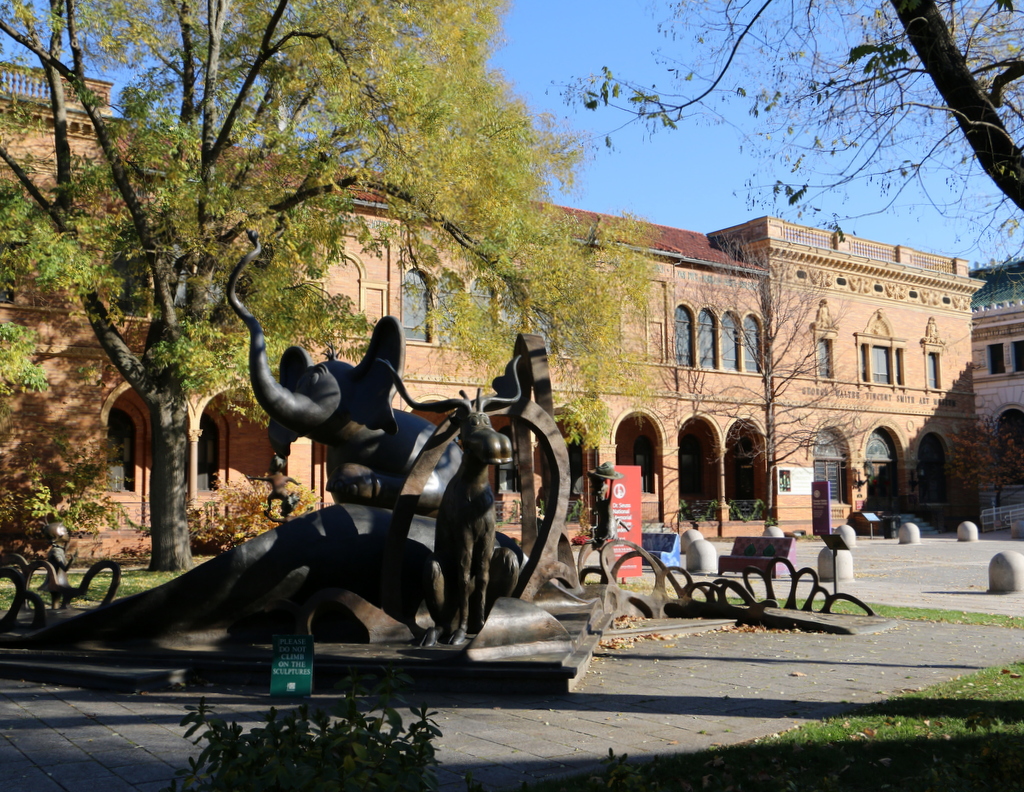Another view of the Museum of Fine Arts, taken around 1909-1910. Image courtesy of the Library of Congress, Detroit Publishing Company Collection.
The view in 2015:

It’s hard to tell, but the Museum of Fine Arts is still there; it is just mostly hidden by the trees in the median of Huntington Avenue. As mentioned in the previous post, this was the second home of the museum, after it outgrew its first permanent building at Copley Square. Since it opened in 1909, this building has steadily been expanded, with the most recent addition opening in 2010. From this angle, though, not much has changed. Even the trolley tracks in the foreground are still there; most of Boston’s trolley lines were replaced with buses in the mid 1900s, but Huntington Avenue’s line is now the E Branch of the MBTA Green Line

